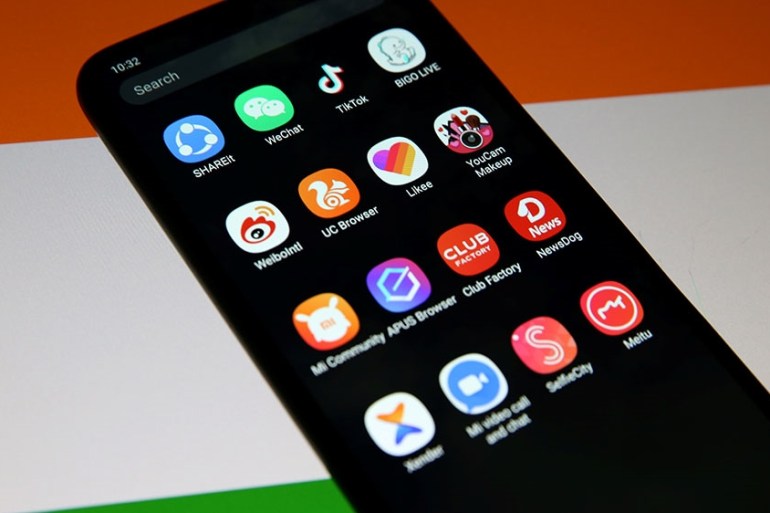Find out the week’s top mobile stories from around the world. Headlines this week include… India withdraws data protection and privacy bill, Verizon warns of mobile, IoT device security threat, Multimillion-dollar Solana crypto theft linked to Slope mobile wallet and much more…

India withdraws data protection and privacy bill
Aljazeera
India’s government has withdrawn a data protection and privacy bill which was first proposed in 2019 and had alarmed big technology companies such as Facebook and Google, announcing it was working on a new comprehensive law.
The 2019 law had proposed stringent regulations on cross-border data flows and proposed giving the Indian government powers to seek user data from companies, seen as part of Prime Minister Narendra Modi’s stricter regulation of tech giants.
Read more…
RCS campaigns in Brazil and Africa drive 37% rise in conversion rates and 137% higher click-throughs compared to SMS
Telemedia Online
RCS marketing campaigns have proved themselves, with data from Upstream showing that they see 37% higher conversion rates and 137% increase in click throughs compared to SMS.
Upstream, a global specialist in mobile marketing technology, showcased the power of Rich Communications Services (RCS) to push multi-channel marketing campaigns to new heights at MEF RCS World.
“Not all users are the same, so communications shouldn’t be either. Every channel has a different dynamic and purpose, and the more channels a brand uses, the more potential users it can also reach. However, RCS has a clear advantage when the aim of the campaign strategy is to engage with consumers in highly interactive and visual ways.
Read more…
Verizon warns of mobile, IoT device security threat
Mobile World Live
Verizon argued businesses must prioritise mobile and IoT device security after recording a return to growth in the number of attacks in the year to April, which it attributed to companies struggling to adapt to changing working patterns.
In the 2022 edition of its Mobile Security Index, Verizon found 45 per cent of the 632 security strategy, policy and management professionals surveyed reported a compromise over a mobile or IoT device in the 12 month period, compared with around 25 per cent in 2021.
Read more…
Here’s how smartphones are shaping the future of payments industry
Gulf Business
The future of smartphones is not only based on 5G, imaging and software security management but also on innovation in design, materials, form and function.
How has the Covid-19 pandemic changed the mobile payments industry?
The mobile payments industry accelerated during the Covid-19 pandemic, with consumers adopting new payment methods, from contactless technology to QR codes to making bill payments, digital transfers and other transactions. Smartphones enabled this shift, and as people and businesses adapt to the new normal, the mobile payments industry is set to grow even further in the future across various touchpoints – from retail stores to banks, hospitals, government services, and more. The rollout of 5G networks in the region will further strengthen the mobile payments industry in the future.
Read more…
Multimillion-dollar Solana crypto theft linked to Slope mobile wallet
The Verge
Earlier this week, thousands of crypto wallets connected to the Solana ecosystem were drained by attackers who used owners’ private keys to steal both Solana (SOL) and USD Coin (USDC). Solana now says that, after an investigation “by developers, ecosystem teams, and security auditors,” it’s linked the attack to accounts tied to the Slope mobile wallet app.
A chart set up on Dune to track the attacks tallies the amount of crypto stolen at just over $4 million, taken from over 9,000 unique wallets.
Read more…
Mobile users are now spending 4-5 hours per day in apps
Tech Crunch
Although the mobile app boom driven by pandemic lockdowns has long since passed, consumers’ mobile usage is still growing. According to new data released today by app intelligence firm data.ai (previously App Annie), consumers in more than a dozen worldwide markets are now spending four to five hours per day in apps.
While the daily time spent in apps varies by country, there are now 13 markets where users are spending more than four hours per day using apps. These include Indonesia, Singapore, Brazil, Mexico, Australia, India, Japan, South Korea, Canada, Russia, Turkey, the U.S. and the U.K. And, in three of those markets — Indonesia, Singapore and Brazil — mobile users are spending more than five hours per day in apps.
Read more…
Most Mobile Game Genres See Revenue Declines in the U.S. During H1 2022 as Industry Headwinds Bite
Sensor Tower
Most mobile game genres in the United States saw player spending and downloads decline during H1 2022 as the market fell by 9.6 percent year-over-year to $11.4 billion, Sensor Tower Game Intelligence data reveals.
Utilizing Sensor Tower’s Game Taxonomy and Game Intelligence features, which segments games into relevant genres and subgenres to support publishers in efficiently identifying key trends, we analyzed each of the 14 main game genres in 1H22 compared to 1H21, looking at U.S. revenue and downloads in each category across the App Store and Google Play. With many challenges facing the market, by looking at the first half of the year, as well as the second quarter, we can get a clearer picture of how the market is faring in the face of the global cost of living crisis, inflation, IDFA headwinds, and other issues.
Read more…
APAC praised for digital service progress
Mobile World Live
The GSMA called for additional collaboration to encourage a consistent approach to integrating digital government services into every sector, to build on progress deploying essential e-government services in the Asia-Pacific region to date.
In its seventh annual Digital Societies report for Asia Pacific, released yesterday (2 August), the GSMA argued nations seeking to bolster digital service should focus on infrastructure, innovation, data governance, security and people.
GSMA head of Asia Pacific Julian Gorman noted in a related statement the region “is bold and diverse in its approach to connectivity”.
Read more…
Google’s new ad policy could be bad news for hypercasual games
Pocket Gamer
The newly announced ad policy updates on the Google Play store could create a new barrier for the hypercasual market, as the change in how developers are required to approach advertising could impact the ability for smaller studios to monetise or acquire new players.
The policy specifically targets what Google calls intrusive ads that forcibly drag players out of a game. That includes full-screen ads which show suddenly, ads that show up at the start of a level or during the beginning of a content segment, and full-screen interstital ads that appear before the loading screen or can’t be closed after 15 seconds.
However, these ads are vital to the success of hypercasual games, with developers relying on them as a means to monetise and advertise. The overhaul could adversely affect the revenue of developers in the genre, especially indie developers with lower budgets.
Read more…
A metaverse reality check: Defining the metaverse
Econsultancy
For the past 12 months, the “metaverse” has been the talk of the digital town. While the term has been in existence considerably longer than this – having been coined in 1992 by Neal Stephenson in his cyberpunk novel Snow Crash – the volume of discussion, speculation and predictions about the metaverse has exploded over the past year, driven in large part by an announcement by Mark Zuckerberg that his company would transition to becoming a “metaverse company” within the next five years.
Since then, commentators have speculated about everything from the metaverse’s impact on society to its influence on business and fashion, and bold predictions have been made about its economic potential. In December 2021, analysis from Bloomberg Intelligence predicted that the metaverse could be a “nearly $800 billion market opportunity”, while McKinsey & Company has even said that the metaverse has the potential to generate between $4 and $5 trillion in value by 2030.





:format(webp)/cdn.vox-cdn.com/uploads/chorus_image/image/71207686/acastro_210329_1777_nft_0003.0.jpg)








